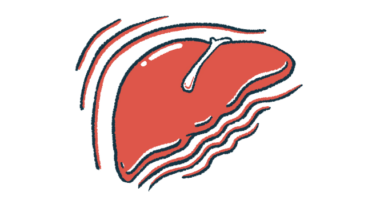Kaftrio Safe, Effective for Children Ages 6–11 With Severe Lung Disease

Kaftrio (elexacaftor, tezacaftor, and ivacaftor) is safe and effective in children with cystic fibrosis (CF) ages 6 to 11 with specific genetic mutations and advanced lung disease, according to a small study.
Findings showed the therapy improved children’s lung function and reduced the need for antibiotics. The children’s nutritional status and growth overall also improved with the triple-combination therapy.
“The recovery of lung function and improvement in growth dynamics raise the hope that such early treatment can avert serious long-term complications,” the researchers wrote.
The study, “Elexacaftor/tezacaftor/ivacaftor in children aged 6–11 years with cystic fibrosis, at least one F508DEL allele, and advanced lung disease: A 24-week observational study,” was published in Pediatric Pulmonology.
Kaftrio is approved in the European Union in combination with Kalydeco (ivacaftor) for patients 12 and older who have at least one copy of the CFTR gene with an F508del mutation, the most common CF-causing mutation. The therapy, which is marketed by Vertex Pharmaceuticals, is approved in the U.S. under the name Trikafta for treating CF in children as young as 6 with the F508del mutation in at least one CFTR gene copy or a CFTR mutation that responds to Trikafta in laboratory studies.
A previous Phase 3 study (NCT03691779) showed that Trikafta was safe and effective in children aged 6 to 11 who have two F508del mutations or one F508del and one minimal function mutation.
A total of 66 children received Trikafta for 24 weeks (six months). Those weighing 30 kilograms (about 66 pounds) or more were given 200 mg elexacaftor and 100 mg tezacaftor, once daily, and 75 mg ivacaftor every 12 hours. Children weighing less than 30 kg received half this dose.
Trikafta reduced the levels of chloride in sweat — used to evaluate whether treatment improves CFTR function — and significantly improved lung function, measured as the percent predicted forced expiratory volume (ppFEV1), or the volume of air that can be exhaled in one second. Improvements also were observed in quality of life and nutritional status.
The study, however, excluded children with very low lung function, defined as an FEV1 of less than 40% of the predicted value. In 2021, Vertex established a managed access program (MAP) in Italy to allow these patients to receive Trikafta before being formally approved.
Here, researchers assessed the effectiveness and safety of a 24-week regimen with Kaftrio in children aged 6–11 with severe lung disease (predicted FEV1 of less than 40%).
The study included nine children (three boys and six girls, all enrolled in the MAP program) with two F508del mutations or one F508del and one minimal function mutation who were attending five CF centers between February and August 2021. Patients received treatment based on their body weight as in the Phase 3 trial.
The main aim of the study was to determine changes in ppFEV1 between the start and end of treatment. Secondary goals included evaluating changes in forced vital capacity (ppFVC) —the amount of air that can be forcibly exhaled from the lungs after taking the deepest breath possible. The team also examined changes in sweat chloride concentration, use of antibiotics, and health-related quality of life using the Cystic Fibrosis Questionnaire-Revised (CFQ-R).
At the study start, mean ppFEV1 was 31.30 and improved to 42.51 after four weeks of treatment, 47.17 after 12 weeks, and 53.67 after 24 weeks. The researchers noted a similar trend with ppFVC.
Nutritional status, determined as body mass index-for-age z-score, also showed improvements following treatment with Kaftrio for 24 weeks.
Sweat chloride concentrations, which are typically high in CF patients — with 60 millimole per liter (mmol/L) or higher being likely — decreased from 102.72 to 36.0 mmol/L after four weeks, 29.0 mmol/L after 12 weeks, and 23.8 mmol/ L after 24 weeks. By the end of the study, all children had a sweat chloride level of less than 60 mmol/L, and the majority (67%), had levels under 30 mmol/L.
The CFQ-R respiratory domain score, which ranges from zero to 100 with higher scores indicating better health, increased from 25 at baseline to 83.3 after four weeks of treatment, and to 100 after 24 weeks.
Before starting treatment, the children had recurrent infections and a high rate of hospital stays. However, after taking Kaftrio, most children (89%) did not need to take antibiotics and no hospitalizations were reported.
No side effects or deaths were reported, showing that the medication was safe and well tolerated.
“[Kaftrio] improved lung function and nutrition, decreased [sweat chloride concentration], greatly reduced the need for antibiotics, and improved the quality of life of CF patients aged 6–11 years with severe lung disease and at least one F508del CFTR allele,” the researchers wrote.
They added that “longer observation times and more real-world and disease registry data are required to confirm the safety and effectiveness of the new and highly efficient CFTR modulators in children with CF.”








